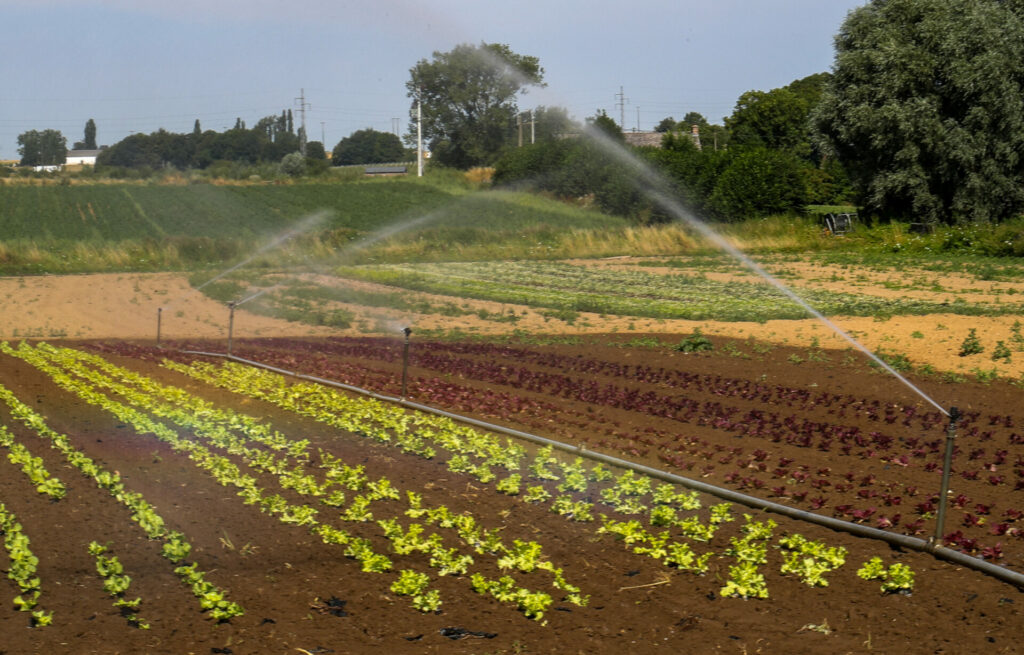Groundwater bodies in Wallonia are contaminated by nitrates and pesticides according to a report which outlined how 13 out of 34 tested bodies showed the presence of toxic substances. Bad news for locals, given that around 80% of the region’s drinking water is sourced from these aquifers, according to information published by Belgian newspaper l’Avenir.
The blame for the pollution lies with Wallonia's agriculture, which draws large amounts of water from these tables and the industry's run-off often finds its way into the water which is later directed towards drinking water supplies.
In a report published on 7 June by Wallonia’s Public Society of Water Management (SPGE), plans have been drawn up to launch a new “participatory approach” to preserving and improving the quality of groundwater by working with local actors and authorities.
Wallonia’s drinking water issues are most notable in Belgium’s southern Luxembourg province, where large amounts of nitrates are finding their way into the water. The new plan, working alongside the region’s farmers, aims to precisely measure the nitrogen content of fertilisers being spread on fields to avoid excessive pollution.
In the village of Gouvy, concentrations of nitrates were found to pose a “very high risk” by the SPGE. “Most of the time, farmers spread too much manure in good faith,” an advisor from water protection NGO ProtectEau told L’Avenir.
Currently, most farmers in the region just estimate the amount of nitrate content on their fields using the total volume of fertiliser, rather than weight. However, the total mass of fertiliser can vary greatly and nitrogen content is often different between batches.
“Sometimes we end up with 40 tonnes of manure being spread when the former thought he was only going to use 20 tonnes,” the advisor added.
Related News
- Belgium makes steady progress towards Sustainable Development Goals
- Drought crisis: Belgium asks permission to ignore certain EU agricultural rules
Wallonia is increasingly turning to localised initiatives to tackle the problem. Both the Sustainable Nitrogen Management Program in Agriculture (PGDA) and Walloon Pesticide Reduction Plan have proven ineffective against stopping the increasing nitrate deposits into water tables.
In the village of Erquelinnes in Hainaut, agricultural waste was found to heavily affect the Bringuette aquifer, which is the main source of water for local residents. 17 local farmers recently committed to reducing their usage of chemicals on nearby fields, experimenting with thermal weed killing solutions, in hopes of improving the quality of the water.
“The impact of the agricultural sector is often the biggest pressure on our catchments,” Eric Van Sevenant, chairman of the SPGE’s management committee told L’Avenir. “Farmers will therefore be the actors in the rehabilitation of water quality. While we must not ignore the significant efforts already made by farmers…most are ready to do even more.”
88 localised areas and 525 farmers have already signed up to the new decentralised plans proposed by the SPGE.
The issue of Belgium’s drinking water is one of the most critical in Europe, according to statistics from the United Nations. Findings show that Belgian rivers and some of the most polluted in Europe and nitrates found in groundwater are the fourth highest in the EU.
Belgium has, by far, the highest levels of phosphates in its rivers, at over 0.2mg per litre, almost four times higher than the EU average. Each year, Belgium significantly depletes its renewable water resources, placing large stress on water availability and increasing the chance of drinking water shortages.

